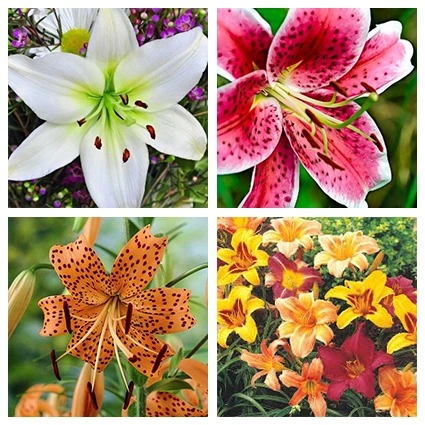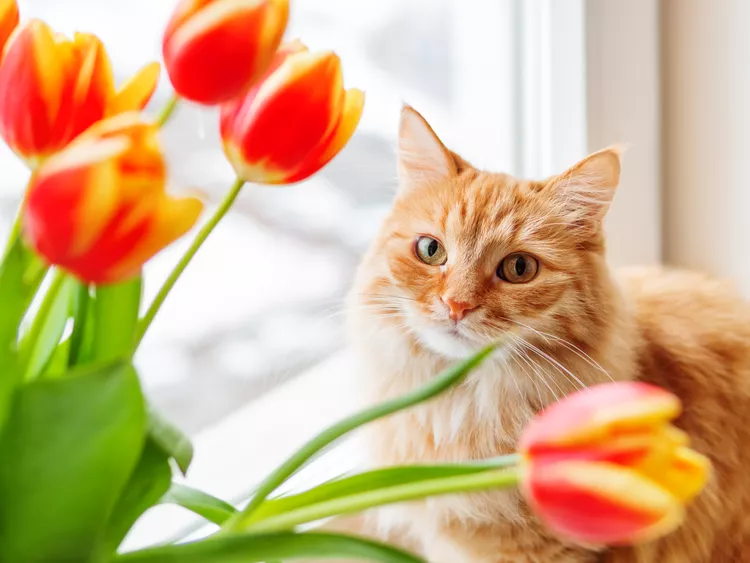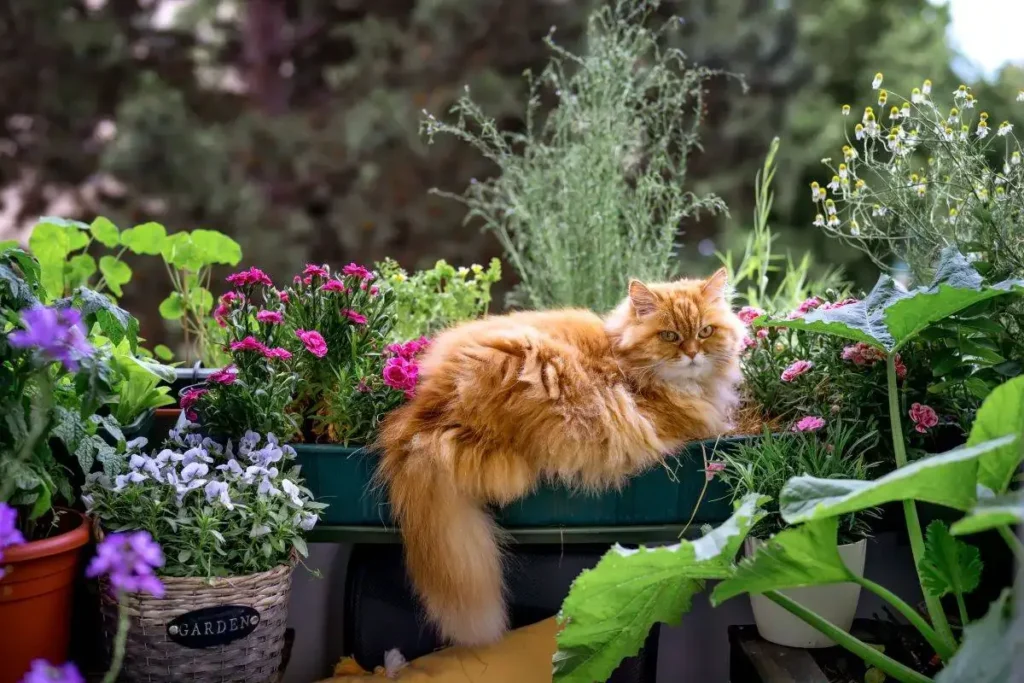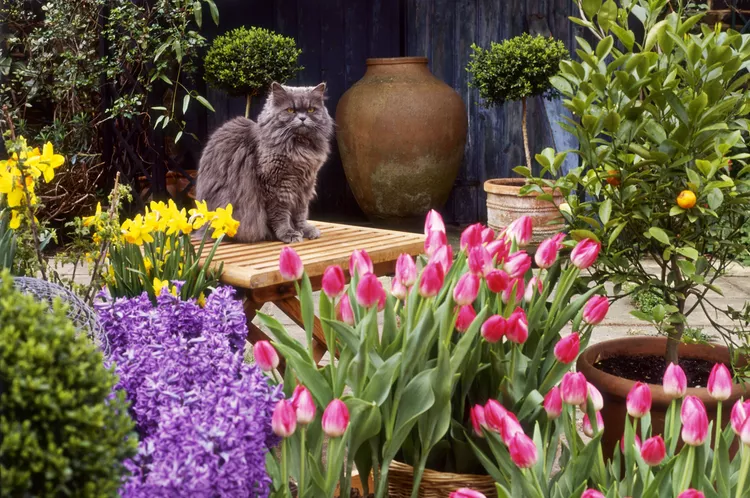Flowers add color and life to our homes, but for cat owners, flowers can also bring danger and confusion. If you’ve ever asked yourself questions like what flowers are toxic for cats or if a beautiful bouquet might pose a threat to your feline, then this practical guide is for you.
- Why Are Cats So Susceptible to Flower Poisoning?
- The Science of Plant Toxicity: Which Flowers are Toxic and Why?
- 5 Most Toxic Flowers to Cats
- How Fast Do Symptoms Appear?
- The Odd Suspects: Less Common Toxic Flowers
- What to Do If Your Cat Eats a Toxic Flower
- Prevention: Keeping Your Cat Safe
- Final Thoughts
Why Are Cats So Susceptible to Flower Poisoning?
To understand what flowers are toxic to cats, you must note that cats are not small dogs. Their bodies process chemicals differently, and they lack certain enzymes in their livers that break down plant toxins.
This means they do not require much of a toxic flower to make them very sick. Cats are also prone to groom themselves, so if they brush against a flower, the pollen attaches to their hair, and they end up swallowing the toxins when they clean.
Indoor cats tend to have a much greater risk due to less available space, so when a bored kitty becomes even more likely to chew on a bouquet.
The risk is considerably higher for outdoor cats in neighbourhoods with neighboring gardens and wind for locally rendered flowery toxins.
The Science of Plant Toxicity: What Flowers Are Toxic and Why?
You may wonder which flowers are toxic to cats, and why are they?
Flowers use natural chemicals to deter animals from consuming them. This can include naturally occurring chemicals like alkaloids, calcium oxalate crystals, and other toxins that can be problematic for cats.
Some of these toxic chemicals may target the kidneys, others may cause heart abnormalities, and some may target the nervous system. Even a small amount, such as a lick of lily pollen or a dog bite of a tulip bulb, can lead to serious health consequences.
Unlike people, cats have difficulty vomiting toxins, and they are small enough that it typically takes a large amount of these drugs or toxins to make them sick.
Three common toxins dominate:
- Alkaloids (in daffodils). These act primarily on the nervous system and the heart.
- Calcium oxalate crystals (in hyacinths). The crystals pierce soft tissue and cause oral burns and swelling.
- Unknown nephrotoxins (in lilies). These toxins induce severe and catastrophic kidney failure within hours!

5 Most Toxic Flowers to Cats
If you’re trying to find out what flowers are harmful to cats, here are five common – and toxic – flowers to steer clear of:
| Flower | Toxic Part | Immediate Symptoms | Long-Term Effects |
| Lilies | All parts, pollen | Vomiting, drooling, pawing at mouth | Kidney failure within 72 hours; fatal without treatment |
| Daffodils | Bulbs, leaves | Violent vomiting, diarrhea | Irregular heartbeat, low blood pressure |
| Tulips | Bulbs, stems | Drooling, upset stomach | Central nervous system depression, seizures |
| Hyacinths | Leaves, flowers | Mouth irritation, gagging | Breathing difficulties, organ damage |
| Cyclamen | Roots, stems | Vomiting, diarrhea | Heart rhythm abnormalities, seizures, coma |
Let’s break each one down so you know exactly which flowers to avoid for your kitty and the reason they’re so harmful.
1. Lilies: Can Cause Kidney Issues
Lilies top every list of flowers that are toxic to cats. All parts of the lily plant – petals, leaves, pollen, etc., as well as water from the vase – are extremely toxic.
If a cat eats or licks any part of a lily plant, symptoms may start with vomiting and drooling, loss of appetite, which may appear in hours.
The potentially fatal reaction is kidney failure, which can take hold in as little as 12-24 hours and become fatal without treatment in less than three days.
Even very small quantities can lead to very serious consequences, and lilies should never be in the home of a cat.
2. Daffodils: Cause Vomiting and Heart Issues
Daffodils are another very common flower that is not safe for cats.
The bulbs, leaves, and water from daffodil stems all contain toxins that can cause severe vomiting, diarrhea, and drooling. The more severe reactions may cause low blood pressure, irregular heartbeat, and seizures.
Since daffodils are common in spring bouquets and gardens, it is crucial to keep daffodils out of harm’s way and away from investigative and curious cats.

3. Tulips: Can Upset Your Cat’s Stomach
Tulips may look nice in your house, but they are toxic to cats. Both the bulbs and the stems have toxins called tulipalin A & B, which can cause drooling, vomiting, and diarrhea in cats.
In more serious situations, tulip toxins affect the nervous system, causing tremors or difficulty walking. If you are thinking of what flowers are toxic to cats in the spring, tulips are high on the list, especially when a cat digs up the bulbs from a garden.
4. Hyacinths: Can Cause Breathing Problems
Hyacinths are a nice plant, and they have a strong odor. They contain calcium oxalate crystals that can burn the mouth and throat of your cat. When your cat eats the leaves or flowers of a hyacinth plant, it may drool, gag, or paw at its mouth.
In extreme cases, swelling from the hyacinth can interfere with breathing or swallowing, and repeated exposure to this plant can cause organ failure. When figuring out what flowers can harm your cat, do not forget these colorful flowers in the spring.
5. Cyclamen: A Plant That Will Violate Cats
Cyclamens are nice house plants enjoyed by many, but their root and stems are laced with saponins, which are toxic to cats. If a cat chews on a cyclamen, the toxins can cause vomiting, diarrhea, and drooling.
Higher doses can result in abnormal heart rhythms and seizures, and more importantly, may even kill your pet.
Cyclamen are usually indoors, so they pose a risk year-round to curious cats, making it an important flower to be aware of if you’re asking the question, What flowers are toxic to cats.

RELATED POSTS:
5 Essential Maine Coon Growth Stages
Top 10 Genius Ways to Keep Your Cat Active
How Fast Do Symptoms Appear?
One of the most frightening aspects of flowers that are toxic to cats is the rapid onset of symptoms. In the case of lilies, you can have vomiting in as little as two hours, and kidney failure, just 12–24 hours later.
Daffodils or tulips can start to make a cat sick within a few hours. At other times, a cat may have no symptoms at all until the organs are being damaged.
That is why it is important to act quickly if you think your cat has chewed on a toxic flower.
The Odd Suspects: Less Common Toxic Flowers
Lillies, daffodils, tulips, hyacinths, and cyclamen are notorious for being dangerous flowers; many flowers can harm cats.
However, looking past the “big five,” there are many other flowers that can be dangerous:
- Foxglove: Contains heart-stopping digitalis.
- Gladiolus: Bulbs can cause lethargy and bloody stool.
- Chrysanthemums: Irritate skin, mouth, and guts.
Even “safe” flowers can become dangerous when treated with pesticides or floral preservatives. Always ask your florist if they use chemical sprays.
What to Do If Your Cat Eats a Toxic Flower
1. Move Your Cat from the Plant: Clear your cat from the flower, and clean flower particles from their mouth, fur, or paws.
2. Identify the Flower: Be sure to identify what flower your cat ate. If you are unsure, bring a sample to the vet.
3. Call Your Vet Immediately: Contact your veterinarian or emergency clinic immediately. Time is of the essence, particularly if your cat ate a highly toxic flower, such as lilies.
4. Monitor for Symptoms: Watch for vomiting, drooling, lethargy, or difficulty breathing. Symptoms can also be delayed.
5. Follow Vet Instructions: Depending on what your cat ate, your vet may recommend inducing vomiting or giving activated charcoal, or possibly simply providing supportive care.
Acting quickly and having a vet involved can really make a difference if your cat has eaten a toxic flower!
Prevention: Keeping Your Cat Safe
To best protect your cat from toxic flowers is to simply not bring them into your home or garden. If you want to know what flowers are safe for cats, here are some good examples:
- Roses
- Sunflowers
- Snapdragons
- African violets
Additional Prevention Tips:
- Place citrus peels around plants (cats don’t like the smell).
- Grow cat grass or catnip as safe alternatives.
- Use hanging planters or keep flower arrangements out of reach.
If you buy plants, always check with your florist or use the ASPCA’s plant database to confirm that they are safe for your cat.
Also check out: Maine Coon vs. Ragdoll
Final Thoughts
As a cat owner, it’s important to know what flowers are toxic to cats, so that you can be sure to keep your furry friends safe. If you know which flowers to avoid and how to recognize signs of poisoning, you’ll be able to keep your cat safe and healthy.
Share this article with fellow cat lovers, and always check before you bring any new plants and flowers home. You can access a list of toxic plants and flowers and their emergency contact information on the ASPCA or Cats Protection websites.
References:
- https://pmc.ncbi.nlm.nih.gov/articles/PMC10822363/#:~:text=Lily%20toxicity%20should%20always%20be,to%20seven%20days%20of%20exposure.
- https://www.researchgate.net/publication/8629983_Daffodil_toxicosis_in_an_adult_cat
- https://www.petmd.com/cat/poisoning/garden-plant-toxicity-in-cats
- https://wagwalking.com/cat/condition/hyacinth-poisoning-1#:~:text=The%20calcium%20oxalate%20raphides%20contain,grow%20all%20over%20North%20America.
- https://www.catster.com/cat-health-care/is-cyclamen-poisonous-to-cats/
- https://www.aspca.org/pet-care/animal-poison-control/toxic-and-non-toxic-plants

